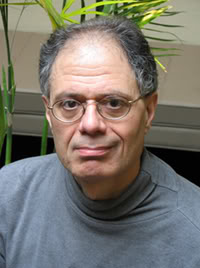In one of the Leonard Cohen ballads she made famous back in the 1960s, Judy Collins sang an arresting line: “the simple lives of heroes, the twisted lives of saints.” Saints were not fashionable in the counterculture. Twenty-five years later, the counterculture is not fashionable. A popular conservative President, a popular conservative Pope, a scary recession, a horrible plague: all these along with, perhaps, the Now Generation’s progress along the life cycle, and even -- who knows? -- the motions of the Holy Spirit, have slowed the apparently precipitous decline of organized religion among the educated and induced a newly respectful attention among the young and the no-longer-quite-young. A generation ago it would have been a lot harder, I’d guess, to get fifteen accomplished writers, mostly in their late twenties to late forties, to write the sort of essays and memoirs that make up A Tremor of Bliss.
And the saints celebrated here are real, old-fashioned, pre-Vatican II ones. There are no obscure, unorthodox proto-hippies or radicals (except Dorothy Day, who’s not officially a saint); no newly-discovered multiculturalist or feminist heroines (except the virgin martyrs, who “give witness to a wild power in women that disrupts male authority”); just the familiar and long-revered Saint Francis, Saint Catherine, Saint Thomas Aquinas, Saint Ignatius of Loyola, Saint Theresa of Avila, Saint John of the Cross, Saint Joseph, Our Lady of Guadalupe; and a few only slightly less familiar: Saint David, Saint Lawrence, Doubting Thomas, Saint Jean de Brébeuf.
This seems right. The great saints of a religion are like the great works of a literature: meant to call forth emulation and commentary in every generation. That is the function of a canon; that is why saints and masterpieces are canonized.
A Tremor of Bliss is an inspired editorial conception which, like many such, didn’t quite work out. The writing is, for the most part, conscientious enough but rarely urgent; the contributors’ intentions are obviously good but, by and large, their imaginations don’t seem really engaged. Francine Prose serves up a few piquant bits from Saint Teresa’s writings (and a few more from Vita Sackville West on Teresa). Paul Watkins’s portrait of Saint David, patron saint of Wales, is full of splendidly weird Welsh names. Enrique Fernandez has an amusing little riff on Cuban santeria which sounds like a benign, folk-Catholic version of voodoo. But mostly these novelists, poets, critics, and scholars have succeeded only in producing very superior devotional literature.
There are two exceptions. Tobias Wolff looks aslant at Saint Jean de Brebéuf, the 17th-century apostle to the Hurons. A scion of the Norman aristocracy, Jean became a Jesuit missionary; after twenty years, he was tortured to death by invading Iroquois. He was selfless, fearless, and, apparently, ruthless. Wolff admires Jean, but with reservations, and sums up his ambivalence gently and compellingly:
"With complete purity of motive and satisfaction of conscience he was able to injure [Hurons’] deepest beliefs, their pride, their social structure, their very humanity, by treating them as crude and expendable vessels of the souls it was his business to save. He did these things not to please himself, but in accordance with the common understandings of devout, civilized men of his time and place. He had no idea of the limits placed on those understandings by the conditions of his upbringing and nationality and language. Who does? The perspectives from which we see Brébeuf were not available to him, as the perspectives from which we will one day be seen are not available to us.
Here is the problem. Is it possible to live a life of authentic faith without the kind of headlong conviction shown by Brébeuf? What else could have sustained him in his solitude and frustration and suffering? I envy him his certainty, until I think of the arrogance and blindness that came with it. We have learned to suspect such ardor."
“Catherine Means Pure” by Kathryn Harrison is the most finely wrought, fully imagined piece in the collection. The young Harrison pursues absolute purity not for its own sake, or for God’s sake, but to win over her beautiful, disapproving mother. She abjures food, fellowship, even sleep, imitating her namesake, Saint Catherine of Siena, who used her own asceticism to escape, rather than attract, her mother. Harrison is less successful: her mother dies, despite the daughter’s faithful ministrations, still aloof. At the memoir’s end, the ache Harrison has conjured up so vividly still throbs.
On second thought, A Tremor of Bliss may have been a doomed project from the start. The failure of so many talented writers to bring their chosen saints to life recalls Blake’s famous comment on Paradise Lost “The reason Milton wrote in fetters when he wrote of Angels and God, and at liberty when of Devils and hell, is because he was a true Poet and of the Devil’s party without knowing it.”
